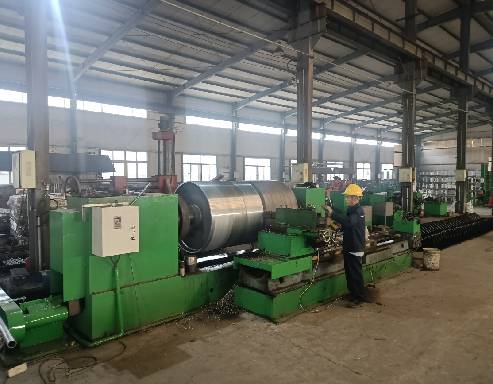 Afrikaans
Afrikaans  Albanian
Albanian  Amharic
Amharic  Arabic
Arabic  Armenian
Armenian  Azerbaijani
Azerbaijani  Basque
Basque  Belarusian
Belarusian  Bengali
Bengali  Bosnian
Bosnian  Bulgarian
Bulgarian  Catalan
Catalan  Cebuano
Cebuano  Corsican
Corsican  Croatian
Croatian  Czech
Czech  Danish
Danish  Dutch
Dutch  English
English  Esperanto
Esperanto  Estonian
Estonian  Finnish
Finnish  French
French  Frisian
Frisian  Galician
Galician  Georgian
Georgian  German
German  Greek
Greek  Gujarati
Gujarati  Haitian Creole
Haitian Creole  hausa
hausa  hawaiian
hawaiian  Hebrew
Hebrew  Hindi
Hindi  Miao
Miao  Hungarian
Hungarian  Icelandic
Icelandic  igbo
igbo  Indonesian
Indonesian  irish
irish  Italian
Italian  Japanese
Japanese  Javanese
Javanese  Kannada
Kannada  kazakh
kazakh  Khmer
Khmer  Rwandese
Rwandese  Korean
Korean  Kurdish
Kurdish  Kyrgyz
Kyrgyz  Lao
Lao  Latin
Latin  Latvian
Latvian  Lithuanian
Lithuanian  Luxembourgish
Luxembourgish  Macedonian
Macedonian  Malgashi
Malgashi  Malay
Malay  Malayalam
Malayalam  Maltese
Maltese  Maori
Maori  Marathi
Marathi  Mongolian
Mongolian  Myanmar
Myanmar  Nepali
Nepali  Norwegian
Norwegian  Norwegian
Norwegian  Occitan
Occitan  Pashto
Pashto  Persian
Persian  Polish
Polish  Portuguese
Portuguese  Punjabi
Punjabi  Romanian
Romanian  Russian
Russian  Samoan
Samoan  Scottish Gaelic
Scottish Gaelic  Serbian
Serbian  Sesotho
Sesotho  Shona
Shona  Sindhi
Sindhi  Sinhala
Sinhala  Slovak
Slovak  Slovenian
Slovenian  Somali
Somali  Spanish
Spanish  Sundanese
Sundanese  Swahili
Swahili  Swedish
Swedish  Tagalog
Tagalog  Tajik
Tajik  Tamil
Tamil  Tatar
Tatar  Telugu
Telugu  Thai
Thai  Turkish
Turkish  Turkmen
Turkmen  Ukrainian
Ukrainian  Urdu
Urdu  Uighur
Uighur  Uzbek
Uzbek  Vietnamese
Vietnamese  Welsh
Welsh  Bantu
Bantu  Yiddish
Yiddish  Yoruba
Yoruba  Zulu
Zulu Mounting Brackets for Conveyor Roller Systems and Their Efficient Installation Techniques
Understanding Conveyor Roller Mounting Brackets
Conveyor systems are an essential component in various industries, including manufacturing, logistics, and packaging. One crucial aspect of these systems is the conveyor roller and its mounting brackets. This article delves into what conveyor roller mounting brackets are, their significance, types, and installation considerations.
What are Conveyor Roller Mounting Brackets?
Conveyor roller mounting brackets are hardware components designed to support and secure conveyor rollers within a conveyor system. These brackets ensure that the rollers are properly aligned and can rotate smoothly, allowing for efficient material handling. The brackets are typically attached to the conveyor frame and can accommodate different roller sizes and weights, making them versatile for various applications.
Importance of Conveyor Roller Mounting Brackets
The mounting brackets are vital for maintaining the functionality and longevity of a conveyor system. Properly installed brackets provide
1. Stability They hold the rollers in place, which minimizes lateral movement and ensures that materials are transported smoothly. 2. Alignment Accurate alignment of rollers prevents belt misalignment and potential jamming, which can lead to increased downtime and maintenance costs. 3. Load Distribution Mounting brackets distribute the weight of the material being conveyed evenly across the roller system, reducing wear and tear on individual components. 4. Ease of Maintenance With the right mounting brackets, replacing worn-out rollers or making adjustments becomes a straightforward task, minimizing operational disruptions.
Types of Conveyor Roller Mounting Brackets
There are several types of conveyor roller mounting brackets, each designed for specific applications and requirements
1. Fixed Brackets These are permanently attached to the conveyor frame and are ideal for straight sections of conveyor systems. They provide a stable foundation for the rollers.
2. Adjustable Brackets These brackets allow for height adjustments of the rollers. They are particularly useful in applications where the conveyor needs to accommodate varying material sizes or where floor inclines are present.
conveyor roller mounting brackets

3. Swivel Brackets Designed to facilitate the movement of rollers in multi-directional systems, swivel brackets are critical in applications that require flexibility, such as sorting and diverging systems.
4. Heavy-duty Brackets For applications that handle heavy loads, heavy-duty brackets provide the requisite support and durability to withstand the increased stress.
5. End Brackets These are placed at the ends of conveyor systems to prevent the rollers from shifting out of place. They assist in maintaining the integrity of the entire conveyor setup.
Installation Considerations
Installing conveyor roller mounting brackets requires careful planning and execution
1. Material Selection Choose brackets made from durable materials such as steel, aluminum, or high-strength plastics depending on the application and load requirements.
2. Alignment Ensuring that brackets are properly aligned is crucial for effective roller operation. Misalignment can lead to increased friction, faster wear, and an increased likelihood of mechanical failure.
3. Regular Inspection Once installed, brackets should be regularly inspected for signs of wear, rust, or damage. Maintenance should be scheduled to replace any compromised components.
4. Utilizing Proper Tools The installation requires specific tools to ensure bolts are tightly secured. Using the correct torque specifications will help in maintaining the integrity of the system.
Conclusion
In conclusion, conveyor roller mounting brackets are integral components that serve to enhance the efficiency, stability, and longevity of conveyor systems. With various types available to accommodate different needs, understanding the function and installation of these brackets can lead to better operational practices in material handling. By ensuring that conveyors are equipped with appropriate mounting brackets, businesses can minimize downtime, optimize performance, and ultimately improve productivity.
-
Revolutionizing Conveyor Reliability with Advanced Rubber Lagging PulleysNewsJul.22,2025
-
Powering Precision and Durability with Expert Manufacturers of Conveyor ComponentsNewsJul.22,2025
-
Optimizing Conveyor Systems with Advanced Conveyor AccessoriesNewsJul.22,2025
-
Maximize Conveyor Efficiency with Quality Conveyor Idler PulleysNewsJul.22,2025
-
Future-Proof Your Conveyor System with High-Performance Polyurethane RollerNewsJul.22,2025
-
Driving Efficiency Forward with Quality Idlers and RollersNewsJul.22,2025





























